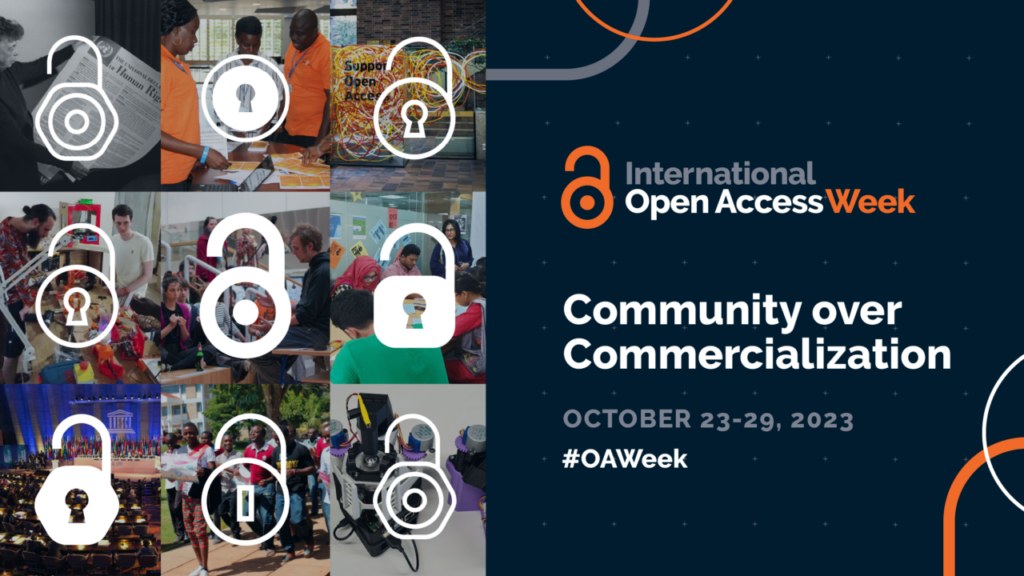Jon Cook (Open Research Project Officer) discusses the latest development in open access publishing for monographs and chapters

Are you publishing your work open access? Until recently, the answer probably depended on the format of your research output. Open access for journal articles is extremely well established, having developed over the past thirty years to the point where nearly 85% of York-authored journal articles are now made freely available on (or shortly after) publication. This is a success story but also something of a double-edged sword. It has led to a perception that open access is uniquely linked to the journal article as a format, and of relevance only to those subject areas where research articles are the predominant mode of publication. For this reason, open access for books has, until very recently, been an alien concept. This has been gradually changing, and 2024 looks to be the year that the revolution truly begins.
The book is an older concept than the journal article and remains the primary way that we transmit written knowledge. To a greater degree than a research article, a book “is not simply a linear text”. Its form and physicality are part of the reading experience, layout and images more central to the presentation1. This has made the very act of transferring books to an electronic format difficult. With academic texts this is further complicated as they often include third-party materials that it may not be in the author’s right to share openly. Perhaps then there are functional reasons behind the slower uptake of open access for books than for journal article.
On the other hand, time and technological progress have, to some extent, blunted the edges of these historical challenges. Whilst e-reading is not perfect and has been somewhat slow to evolve past a basic functionality, its popularity remains stable. It has proven, in the fiction sector especially, to be an enduring format rather than a fad. Likewise, in the academic world there is now practical guidance for authors looking to manage copyright for third-party materials in their work. Perhaps most importantly, there is a recognition that print and electronic formats can, and should, co-exist. For many people and in many situations, print books will continue to have a relevance and pre-eminence. Yet there is a growing realisation that open access electronic materials can complement print by providing wider access, especially in areas where printed copies may be less obtainable for financial reasons or because they have gone out-of-print. This is especially important for monograph materials in the arts & humanities, which tend to have a longer period of academic relevance than scientific journal articles, which can be more quickly superseded by newer studies. Far from being irrelevant to the humanities, electronic provision, and open access more specifically, can be central in meeting some it its traditional challenges.
If there is nothing in the format of the book itself that should disqualify a move to open access, perhaps the sluggishness to move in this direction has been more rooted in the makeup of the publishing landscape. The uptake of open access for journal articles, especially in the sciences, has been made easier by institutional agreements. These see universities pay an annual fee that allows their authors to publish articles within a range of the publisher’s journals without paying an article processing charge (APC). APCs charged on individual articles cost an average £2,000-£3,000 per article but can reach as high as £10,000. They are a significant barrier to authors who are looking to publish in journals outside of institutional agreements and can dissuade them from committing to make their articles openly available. As Roger Schonfeld points out, academic publishing in STEM is populated by a number of large-scale conglomerated publishers such as Elsevier and Springer Nature. Their scale, and share of the academic literature, makes deals with university consortia easier to negotiate and more worthwhile for all parties. Humanities on the other hand has not seen the same accumulation of power with just a handful of publishers, and there remain many independent humanities houses.

Whilst institutional agreements do favour STEM subject areas, this has left a far from barren open access environment in the humanities, and for academic book publishing in general. Monograph publishers have simply had to be more inventive in their offerings. What we see as a result is real diversity in models for funding and producing open access books. University presses, such as our own White Rose University Press, continue to flourish and many provide an established route for authors looking to publish in an open access format, with their business models usually being supported by author fees. Elsewhere, the independent Open Book Publishers offer a fee-free publishing route on a framework underpinned by profits from the print sales of their open access books. Consortial funding models also look to avoid charging authors to publish their work. The Direct to Open initiative, facilitated by MIT Press, asks supporters to make a donation towards its yearly target. When this is met, its entire corpus is made openly available. Society publishers such as the Royal Historical Society (RHS) are also forging ahead with partner funding models such as that which RHS use to produce their New Historical Perspectives series. Whilst many such initiatives are in their formative stages, they show a real desire by book publishers to provide their authors with open access solutions. Additionally, the York Open Access Fund provides funding for York authors to allow them to explore their options and choose the best fit for their work.
The existence of open access publishing routes doesn’t necessarily drive an uptake of open access though, and without other factors influencing development it would likely remain a niche interest within predominantly book-based research communities. For journal articles, open access in the UK really gained traction with the introduction of UKRI (then known as RCUK) policies beginning in 2006. These required authors to publish via open access channels but also made funding available to make this possible. That UKRI, the UK largest funding body, have previously held off on similarly mandating open access for their funded books, can be taken as an admission that they felt the landscape for this type of publishing was not yet mature (though the Wellcome Trust’s open access monograph policy dating back to 2013 must be acknowledged as a trailblazer on a smaller scale).
The 2024 introduction of a mandate from UKRI requiring authors to make their books openly available on publication is therefore a real step change for open access in this area. It has the potential to normalise the open publication of monograph material and give authors the same freedom to make their work openly available as they would enjoy if they were publishing a journal article. Initially £3.5 million will be ringfenced for this purpose. There will be challenges in implementing the policy: as Samuel Moore and Niamh Tumelty point out, the hope is to avoid some of the unsustainable funding models that arose after the advent of journal article funding mandates 4. Yet, if the policy is a success it will go a long way to dispelling one of the more persistent myths around open access: it need not apply especially to one format of research output, nor to particular subject areas only. With the right backing, and support for equitable and transparently funded publishing models, we can be successful in more widely sharing the substantial segment of the University’s world-class research that is currently published in book form.
Further Guidance
The Open Research team can help with any questions relating to the new UKRI monographs policy. UKRI have also published guidance about complying with their policy, and are hosting a webinar aimed at researchers and support staff on 8th November. The York Open Access fund can also help authors to publish via fully open access routes where alternative funding is not available. Any staff or student affiliated with the University is able to apply to the fund.
References
1 Crossick, G. (2016). Monographs and open access. UKSG Insights, 29(1), p.17. Available at: doi: 10.1629/uksg.280 [Accessed 18 October 2023].
2 University of Oxford. (2023). Paying for open access articles. [Online]. University of Oxford. Available at: https://openaccess.ox.ac.uk/oa-payments [Accessed 17 October 2023].
3 Schonfeld, R.C. (2023). Will humanities and social sciences publishing consolidate? The Scholarly Kitchen, 22 February 2023. Available at: https://scholarlykitchen.sspnet.org/2023/02/22/hss-publishing-consolidate/ [Accessed: 18 October 2023].
4 Moore, S.A. and Tumelty, N. (2021). Reflections on the new UKRI open access policy, UKSG Insights, 497. Available at: https://www.uksg.org/newsletter/uksg-enews-497/reflections-new-ukri-open-access-policy [Accessed 23 October 2023].



